How to make a Christmas wreath – create your own beautiful wreath from scratch on a budget
Our beginner-friendly guide to making your own festive wreath to adorn your front door
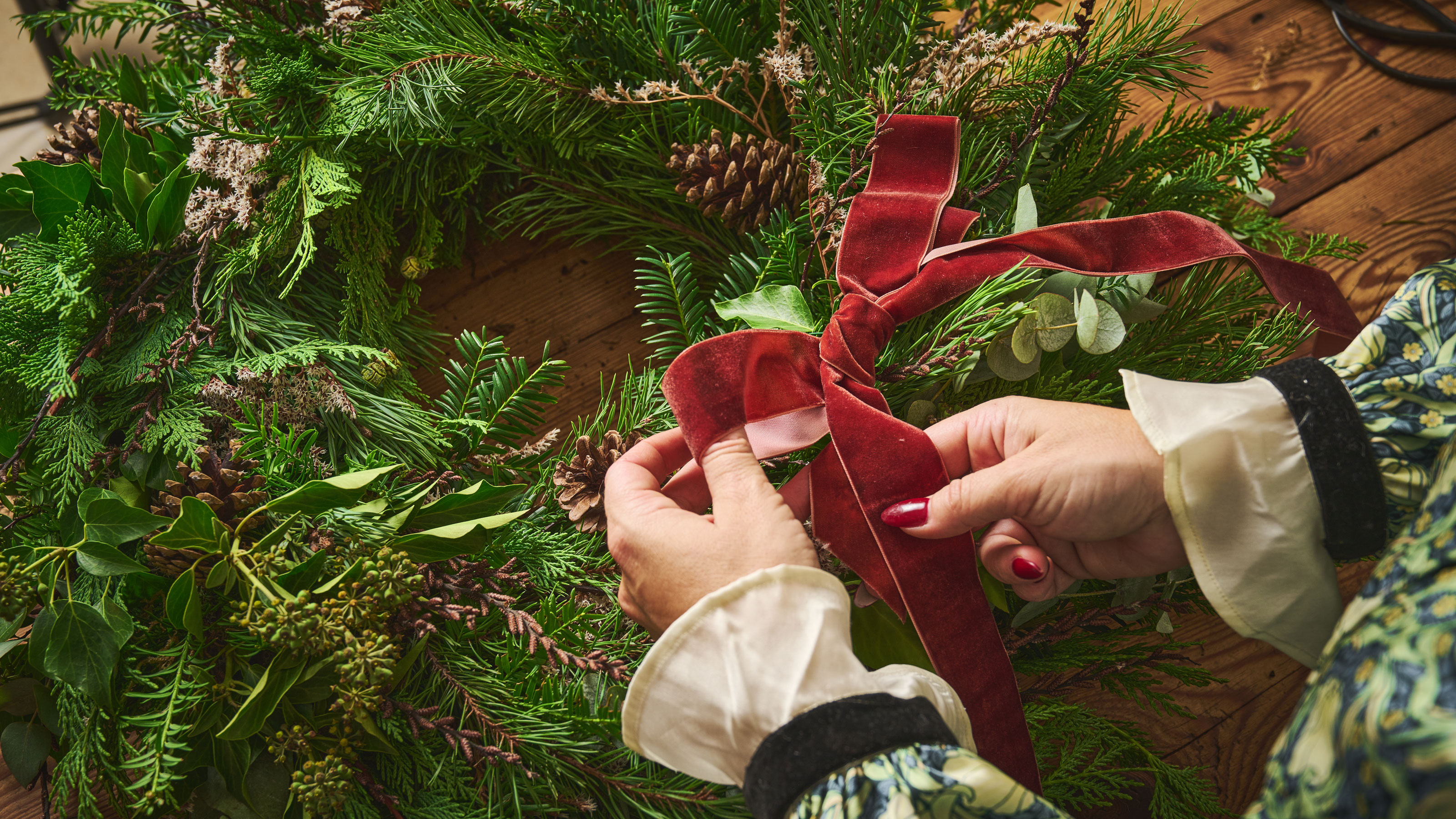
Learning how to make a Christmas wreath is one of the best budget Christmas decorating ideas you can try at home.
Large, fluffy, statement wreath ideas might look incredible, but they can cost a small fortune from a florist. However, with a bit of practice, you can make your own with foraged foliage, supermarket offcuts and Amazon buys. If you are going for that bold and big look our top tip is to make friends with your local Christmas tree seller and see if they have any branch offcuts you can snaffle for a bargain price (or even for free).
We've enlisted the help of floral designer Celeste Hyland to show how you can make your own stunning wreath from scratch using foliage and seedheads gathered from the garden. So turn up the Christmas tunes and let's get started.
How to make a Christmas wreath
When it comes to foliage and flowers, we recommend traditional spruce as the main element in your wreath. For the other bits you need, most should be available at your local garden centre, or you can get everything but the greenery on Amazon or at Hobbycraft.
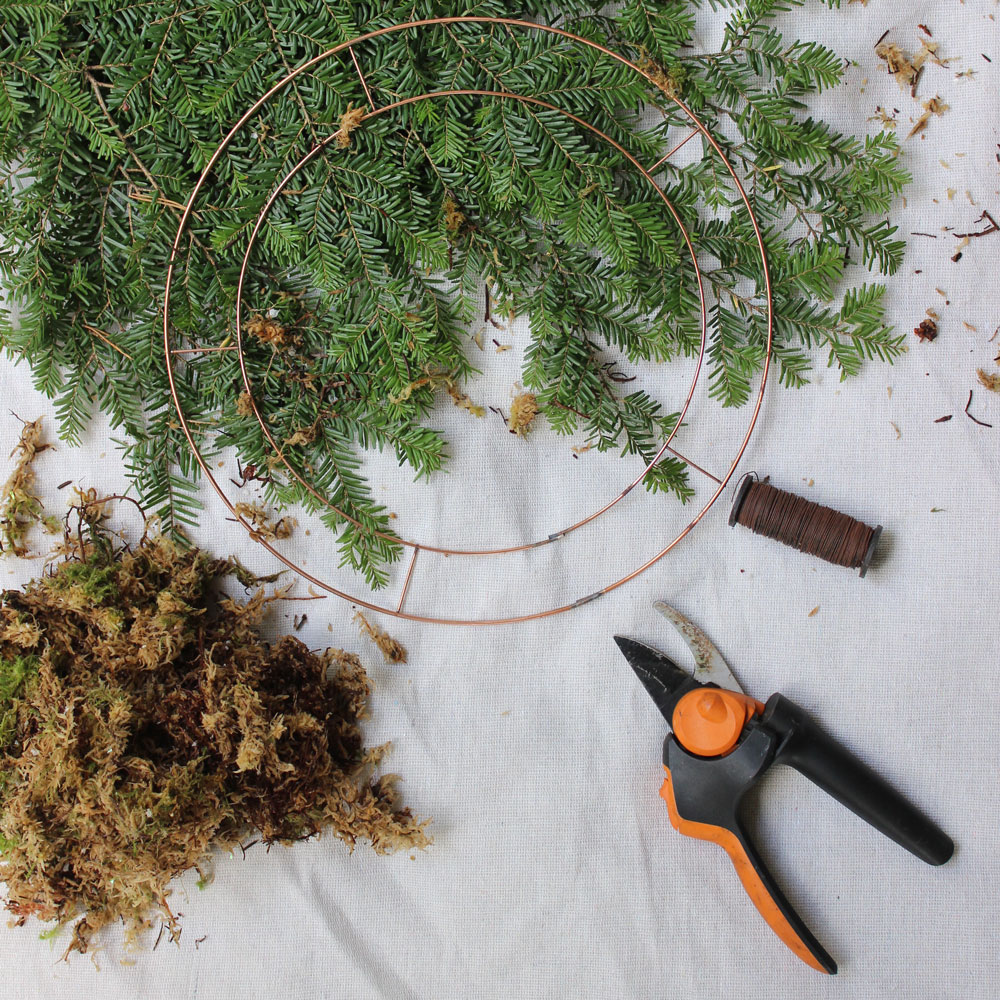
What you will need
To make this Christmas wreath you will need:
- Reusable metal wreath ring, this ring is from Amazon
- Florist wire and wire sticks, from garden centres and florists, or buy online from Amazon
- Grass moss, from the garden, garden centres or florists.
- Foliage and dried flowers, from the garden or a local florist
- Velvet ribbon, this one came from Rowen & Wren
How to make a Christmas wreath – step by step
1. Collect your foliage
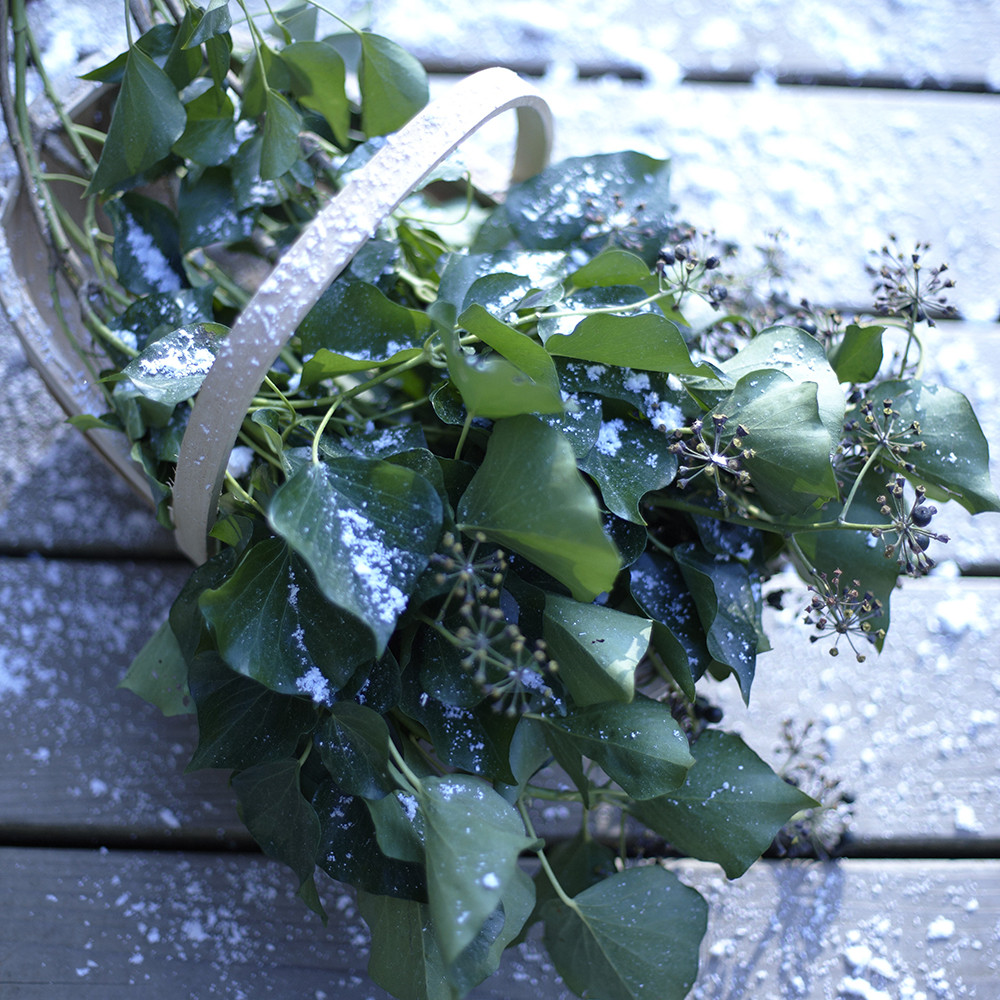
Spruce or fir is the main element you need as its evergreen and will last. For this you can use trimmings from your Christmas tree, or cut some from your garden. Your local florist will likely sell branches or pop to your nearest Christmas tree seller and ask if you can have some of their offcuts.
For the filler foliage, eucalyptus is always a winner, as well as branches or bay or rosemary. You could grab a few supermarket bouquets, and use the greenery and flowers from these for your wreath.
Sign up to our newsletter for style inspiration, real homes, project and garden advice and shopping know-how
For a fuller wreath, supplement your stems with extras cut from your garden or forage some on winter walks in the countryside. Birch branches, holly and ivy make pretty additions.
2. Prepare your wreath ring

'Using a metal wreath ring, begin by attaching a roll of wire securely to the frame, do not cut the wire roll off until the wreath is finished,' explains floral designer Celeste Hyland. 'Once the wire is secure, begin to pack the moss onto the frame, wrapping the wire around to secure the moss in place.'
The best way to pack the moss to the frame is to take a good handful of your natural moss, and press it into a firm sausage shape. Place it onto the frame starting at 12 o’clock and wind the wire around it. Make sure to press the moss together so it forms a good, solid base.
Pull the wire tightly as you wind it around, moving clockwise. Repeat with another handful of moss each time until you have covered the whole frame.
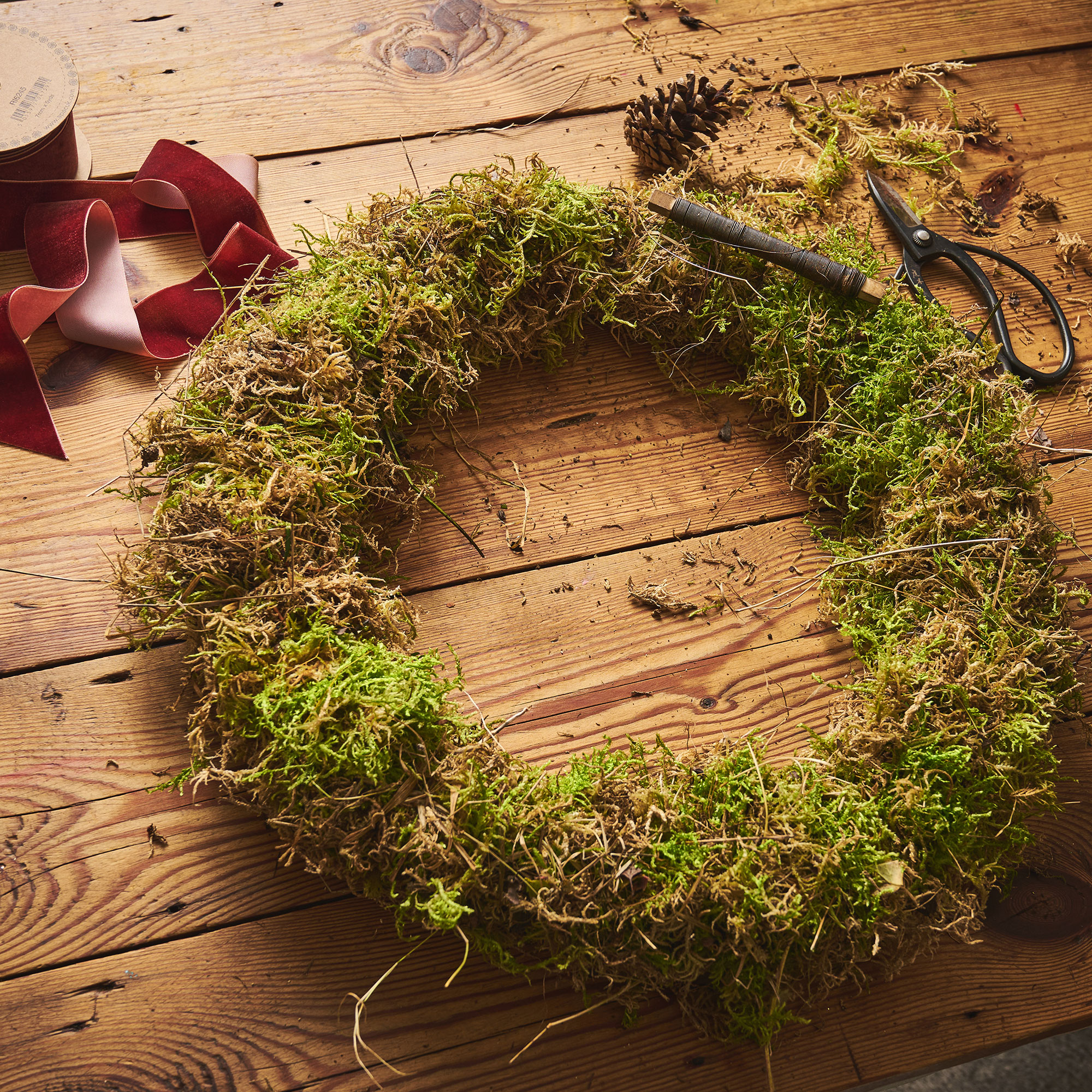
3. Gather foliage into posies
While you can do this as you go along we find it easier to make a selection of posies at the start, ready to cover the moss on the wreath. Eucalyptus, cots pine, rosemary, heather, ivy, box, laurel, and asparagus fern will all look great in a posy, but you can also add in some dried flowers too.
Cut the stems of your chosen foliage so they’re 8-15cm long, and use the same principle as above to tie them into clusters of 3-4 different sprigs. You’ll need to make roughly 18 grouped bundles to fill the wreath.
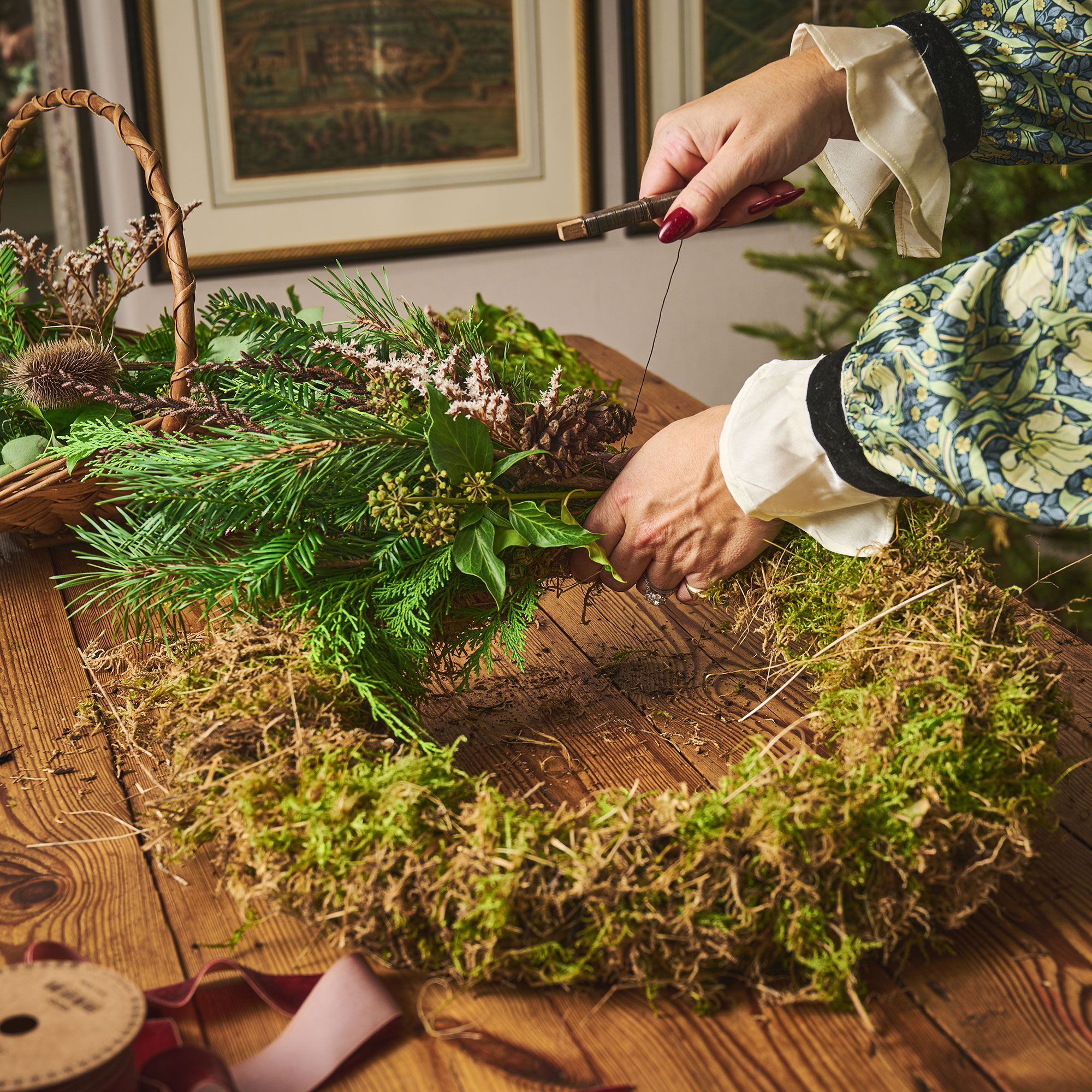
4. Add posies to the wreath
'Once the ring is covered in moss, create a posy from foliage,' says Celeste. 'Lay it on to the moss and wrap it tightly a few times around the stems and frame with the wire. Continue to add more posies, ensuring you cover the base of the previous posy and arranging the foliage so it looks balanced. '
'Keep the posies quite full for maximum impact, mixing variations of seasonal greenery and twigs for texture. Dried pieces look great added, too,' Celeste recommends.
If you're not sure were to start place the posy of foliage at the top of your wreath, pointed to 10 o’clock, with the stems on top of the moss base. Wrap the reel wire tightly around the stems and moss base to secure in place. Then simply work clockwise around the wreath, never cutting the wire.
Continue until the whole moss base is covered with foliage. 'The last posy should have its base tucked under the first to create a seamless circle. Wrap the wire tight, tie it off on the metal frame, then cut it,' adds Celeste.
Give the foliage on your wreath a fluff to spread out the branches and make sure it's looking as full as possible. If you spot any areas that are looking a little sparse, cut some extra foliage and poke it in under the wire you’ve used to secure all the bunches to the wreath. You could also cut an extra piece of wire to secure additional mini posies of foliage.
5. Personalise with decorations
Once your foliage is all attached to the wreath it's time for the fun part – decorations!
'Pine cones, dried fruit and seasonal pieces can be wired in at the end using wire sticks, with a velvet bow to finish,' recommends Celeste. But when it comes to decorating there are so many options, you could also use metallic spray paint to glam up foliage or decorations, or even wire in a couple of old baubles.
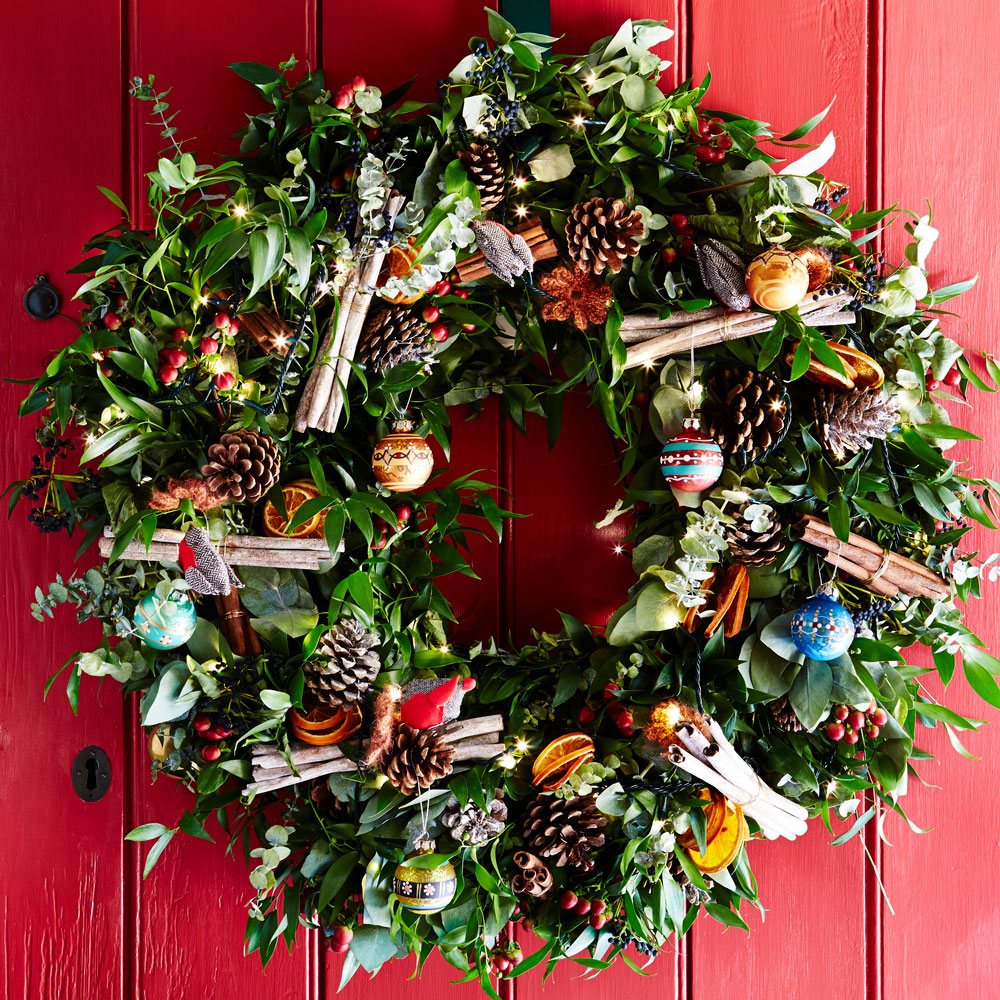
Here are ideas of other things you could use to decorate your wreath:
- Baubles: Replace hanging loops with florist's wire to secure to the wreath
- Cinnamon sticks: Tie three together with string or ribbon, then loop wire through the string at the back and twist onto the foliage
- Pine cones: Take some wire and wrap it around the base of the pine cone. Twist the wire secure tightly and use the ends to fix it in place
- Fairy lights: Weave a set of battery-powered fairy lights into the foliage for extra twinkle
- Dried flowers: Dried hydrangea heads or fern fronds look gorgeous nestled into a wreath
- Feathers: Pheasant feathers add pattern and interest to your Christmas wreath – simply poke them into the base

6. Finish with a bow
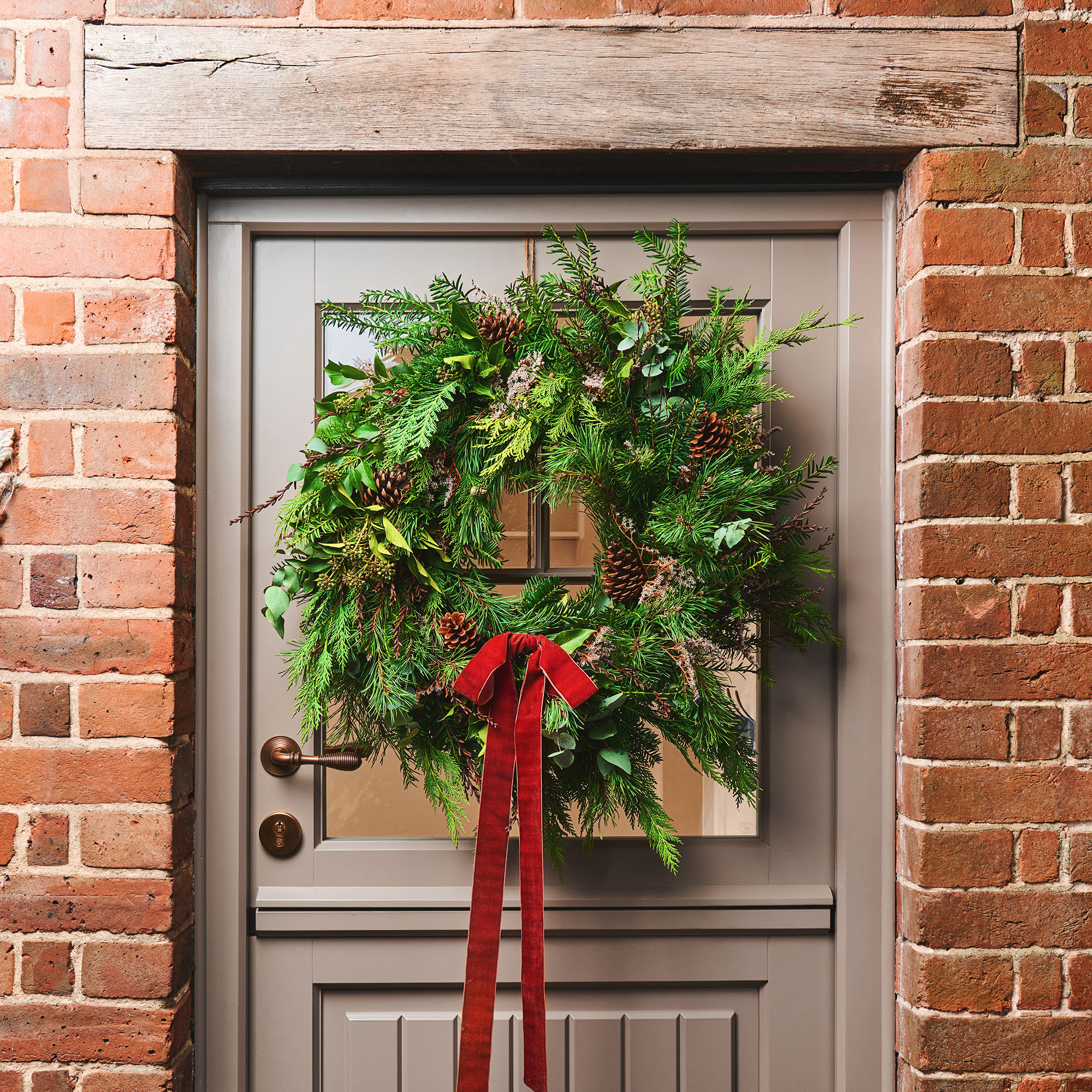
Tie a bow on a flat surface. Bend a piece of stub wire in half so it looks a bit like a kirby grip. Slip it through the back of the bow’s central knot, position it on your wreath (at the top, the bottom or at a jaunty angle – it’s up to you!), then press the two ends of the stub wire at a downward angle so that they won’t slide out when the wreath is upright. Find the ends where they stick out and fold them down into the wreath to secure.
The easiest way to hang your wreath on your front door is using a door hanger such as this one from Amazon. But the door isn't the only place you could display your homemade wreath. There are plenty of other Christmas wreath ideas you could use to decorate your home for the festive season.
Your beautifully made wreath should last for at least 3 weeks. You can always remove and replace any sprigs of foliage that start to look a bit sad – prolonging its lifespan.
FAQs
How do you make a Christmas wreath on a budget?
It's not hard to make a cheap wreath as you can gather most of the materials you need for free. Forage for your greenery in your garden or on common land, or ask your local tree supplier if they will give you some offcuts for free to keep costs down. Instead of a shop-bought wreath base, you could make your own from sturdy wire (or repurpose an old wire clothes hanger).
Swap eucalyptus (which can be pricey at your local florist) for other types of foliage you might have growing in your garden such as herbs (sage leaves or rosemary). Sprigs of greenery from hedging such as laurel or box are also great for full and lush looking wreaths.
Save foliage and greenery from other bouquets throughout the year, then dry it to re-use to make a Christmas wreath. Grasses, heathers, lavender and thyme all work well for an alternative wreath.
What are the rules on foraging in the UK?
When foraging it's important to make sure you gather greenery for your wreath sustainably and responsibly and stay within the law. The countryside act states that foraging on common land for personal use is acceptable. Stick to paths to avoid trampling other areas, and only take what you need for your wreath. Cut off small branches and don't uproot plants as this can damage them. It's illegal in the UK to dig up or remove a plant from the land on which it is growing without permission from the landowner or occupier.
Most Woodland Trust sites allow foraging for personal use but some sites are restricted so look out for signage.
If you're not brave enough to tackle a full wreath yourself, don't worry why not try picking up a cheap basic wreath from a garden centre or supermarket? They've done all the hard work for you, so all that's left is for you to add a little flourish.
Tamara was Ideal Home's Digital Editor before joining the Woman & Home team in 2022. She has spent the last 15 years working with the style teams at Country Homes & Interiors and Ideal Home, both now at Future PLC. It’s with these award wining interiors teams that she's honed her skills and passion for shopping, styling and writing. Tamara is always ahead of the curve when it comes to interiors trends – and is great at seeking out designer dupes on the high street.